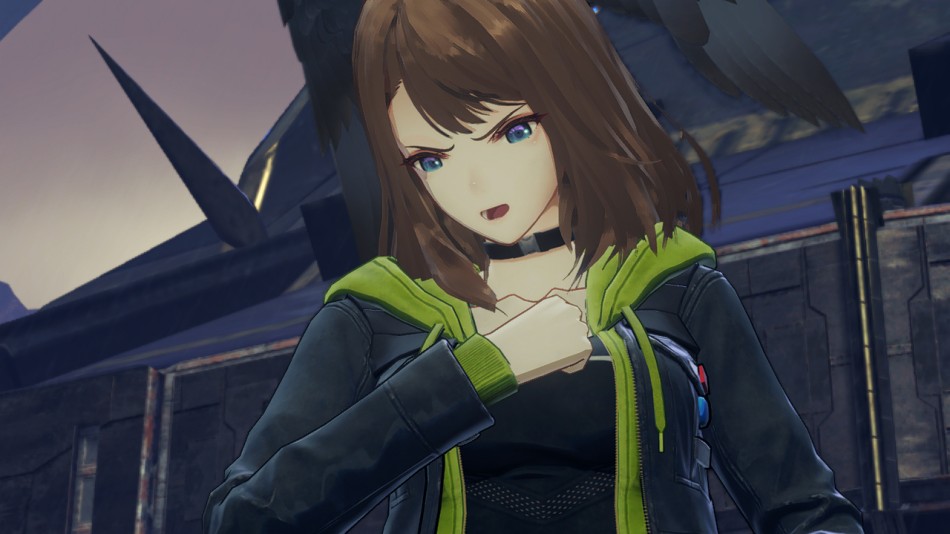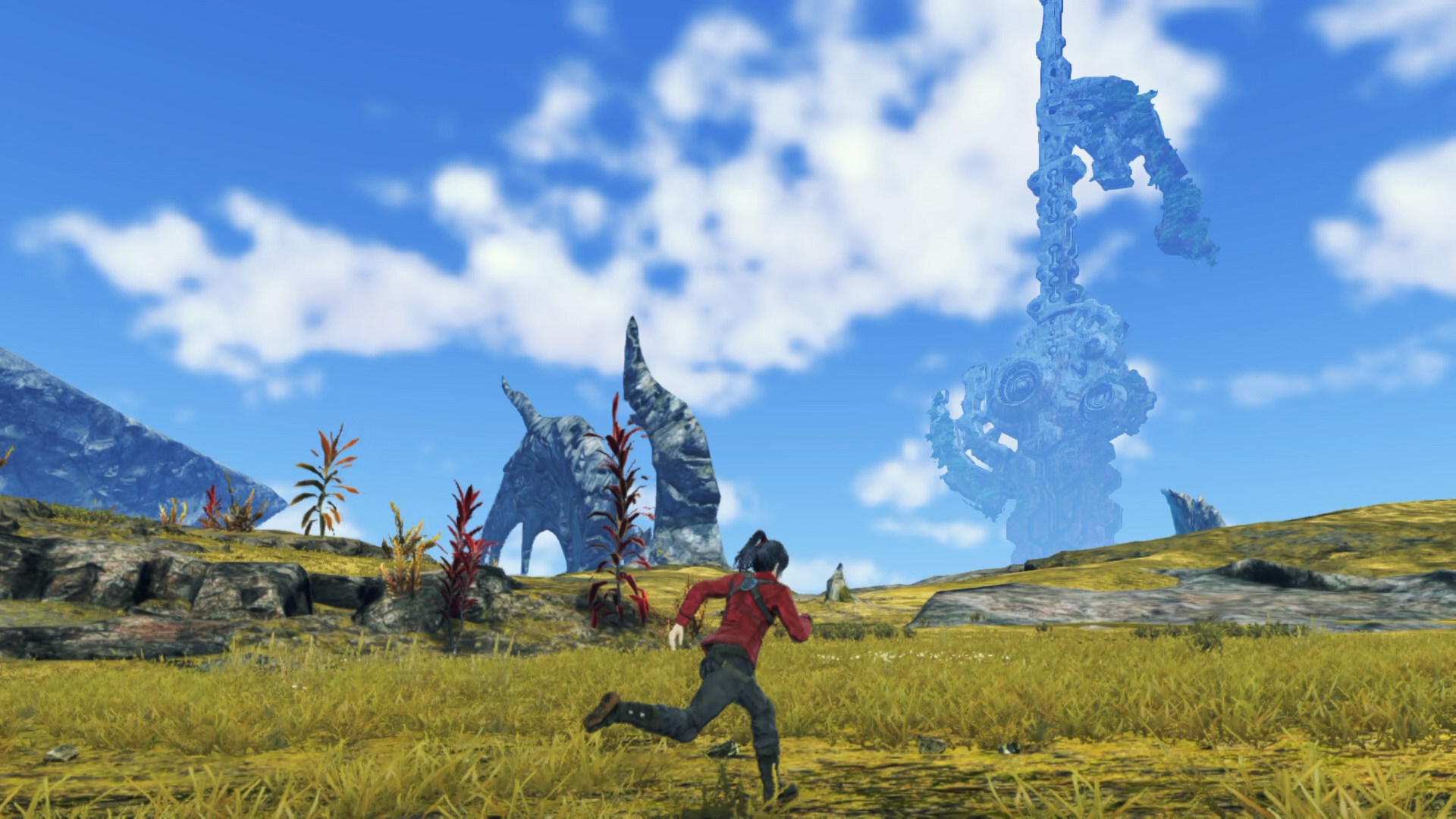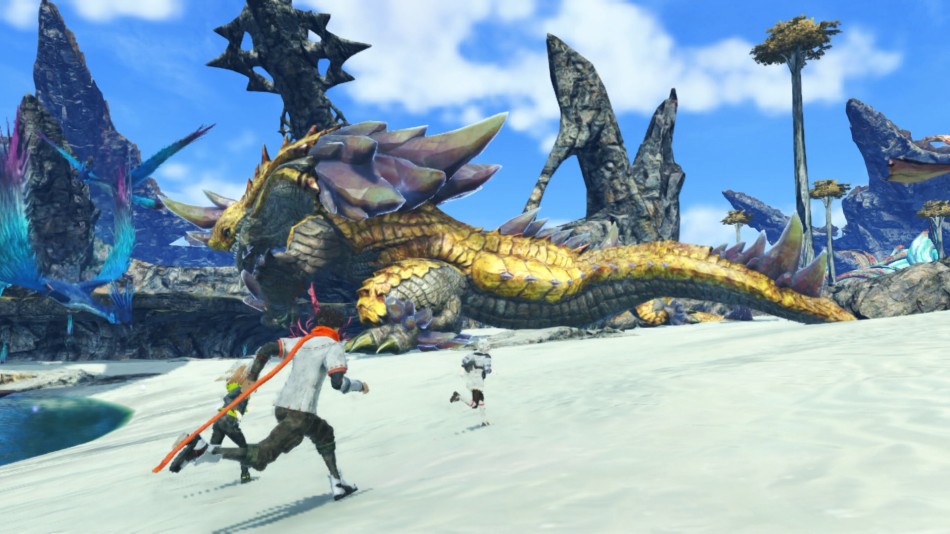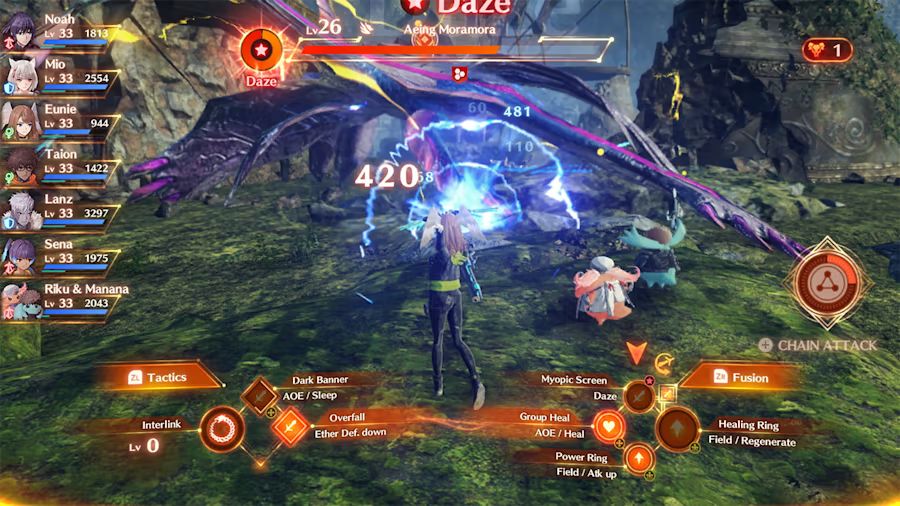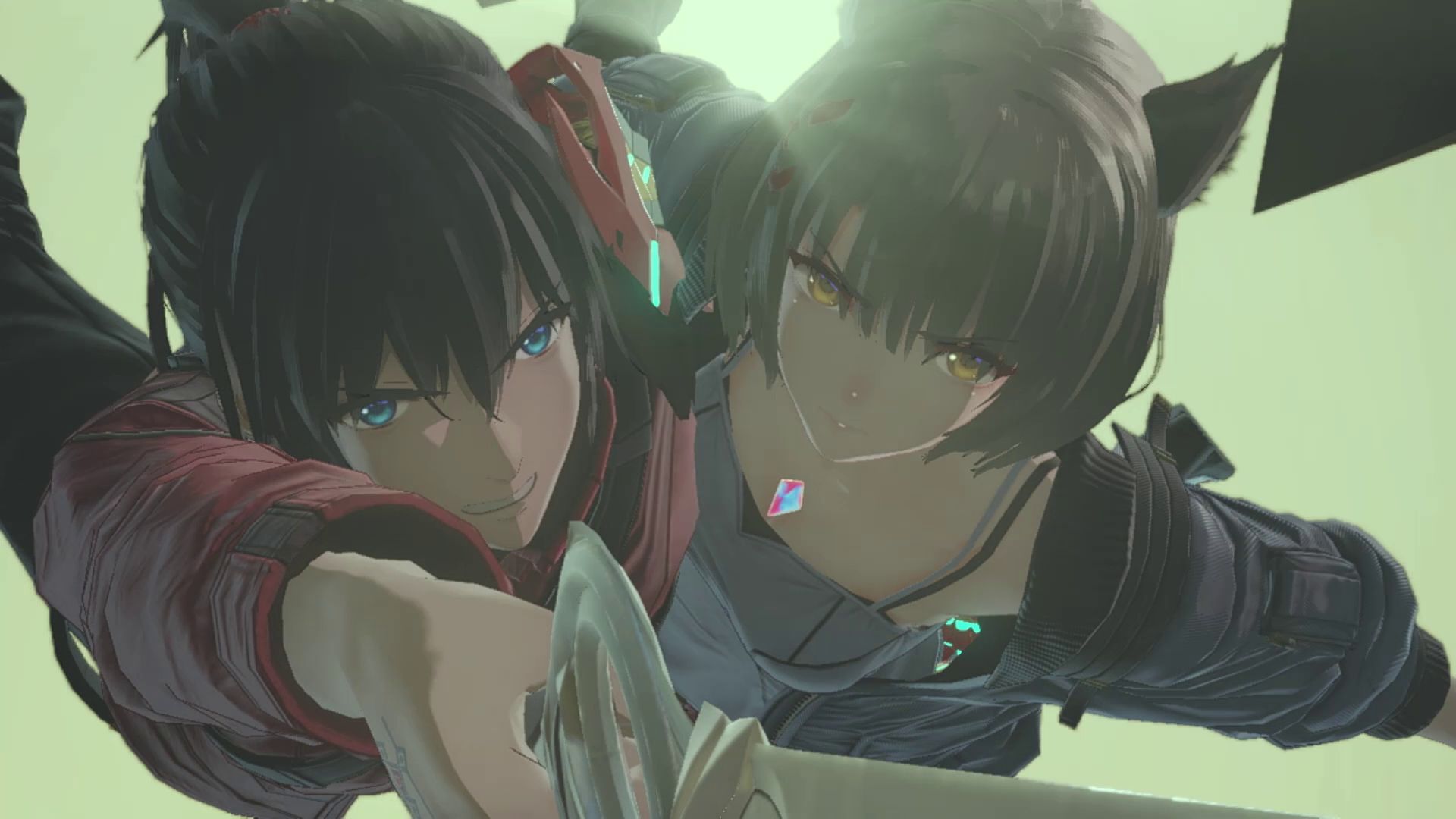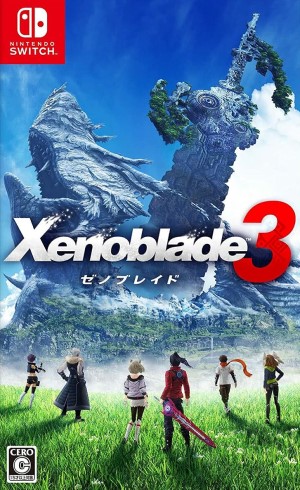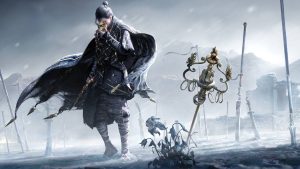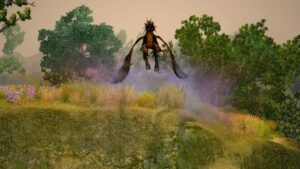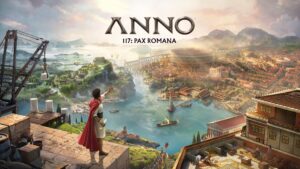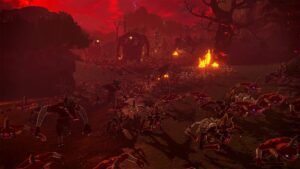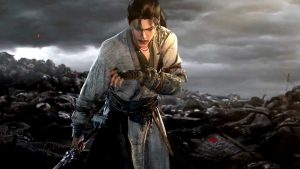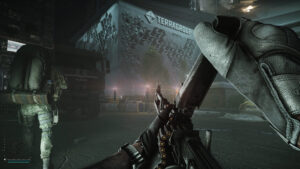
It’s funny to think back to 2010, when the original Xenoblade Chronicles was this niche JRPG that Nintendo didn’t even plan on releasing globally. If it hadn’t been for a widespread fan movement that ultimately led to the company relenting and bringing the game to worldwide markets, we probably wouldn’t be talking about Xenoblade right now. And yet here we are, at a point where it’s probably among the most ambitious and popular franchises in the genre at the moment. With each new game, Xenoblade Chronicles’ stock has risen- and with Xenoblade Chronicles 3, it’s going higher still. This is a proper culmination of Monolith Soft’s grandiose saga in every sense of the word. World design, characters, exploration, combat- in almost every area that counts most for a game of this kind, Xenoblade Chronicles 3 shines significantly brighter than its predecessors.
The game is set in the world of Aionios, where two nations – Keves and Agnus – are and have always been at constant war with one another. The people of the world know nothing but war, and are bred from birth for that purpose and no other, and if killed in combat – which is a constant threat – their life force gets sucked up by the enemy for sustenance. Another curious trait everyone in the world shares is that they all have a 10-year lifespan, which means heavy considerations such as mortality and sacrifice are always looming in the back of everyone’s minds.
"This is a proper culmination of Monolith Soft’s grandiose saga in every sense of the word. World design, characters, exploration, combat- in almost every area that counts most for a game of this kind, Xenoblade Chronicles 3 shines significantly brighter than its predecessors."
Typically enough for a Xeno game, Xenoblade Chronicles 3’s story is laden heavily with thematic threads that define much of the experience. It’s a much grimmer game than its predecessors, with characters always being painfully aware of how close they are to their end (some more than others) and often finding themselves wondering whether the time that they have is even enough to make any sort of a difference. It lends a great deal of weight to some of the game’s more prominent story beats and turns, and helps raise the stakes right from the get go, while also making for poignant and affecting individual story arcs- though, predictably enough for a Xenoblade story, things do escalate by a wonderfully ridiculous degree as the game progresses.
An even stronger aspect of Xenoblade Chronicles 3’s is its cast of characters, which is undoubtedly the strongest ensemble in the series to date. Xenoblade games have always boasted some pretty cool characters, and developing endearing and consistent personalities is something the series has only gotten better at over time. Here, it’s at the top of its game. Protagonists Noah and Mio, off-seers who play music on their flutes to send off the souls of the dead, are a strong pair to revolve the game around, but the rest of the party, too, is equally well-developed.
Each character gets plenty of time in the sun, and the game does an excellent job of painstakingly fleshing out the personalities, motivations, and backstories of all six of its main characters. Meanwhile, the bonds and friendships that the main party forms with each other provide a strong emotional core for the story, to the extent that I felt personally invested in each of their personal stories and the relationships that they were building with each other. Outside of the party, Xenoblade Chronicles 3 has a number of other important characters who also contribute towards strengthening the story more often than not. This is a much more character-driven story than the previous two Xenoblade games, so it’s a good thing that the personalities that this ambitious tale revolves around are such endearing ones.
And it really is ambitious- that doesn’t quite do it justice, in fact. Of course, it should be no surprise to anyone who has experience with this series, but Xenoblade Chronicles 3 deserves to be lauded not only for how imaginative and grandiose it is, but also because it actually executes well on those ideas throughout the massive 100-hour experience. That’s a tall order, to say the very least, but Xenoblade Chronicles 3 does it with aplomb.
"Xenoblade Chronicles 3 deserves to be lauded not only for how imaginative and grandiose it is, but also because it actually executes well on those ideas throughout the massive 100-hour experience."
In fact, as true as that is even within the borders of the game’s own story, it’ll be even truer for those who’ve played the first two games. This is a standalone experience and you don’t need to play Xenoblade 1 and 2 to understand the major story beats, but if you have played them, your experience is going to be so much more enriched. Xenoblade Chronicles 2 did a fantastic job of connecting to its predecessor in unpredictable ways and recontextualizing the series’ overarching narrative threads and themes in ingenious fashion- in fact, I don’t think it gets the credit that it deserves for how well it did that. Xenoblade Chronicles 3 is very much cut from the same cloth- it does the same thing, but on an even grander and more intricate scale. Fans of the series will be very, very satisfied.
Xenoblade Chronicles 3’s storytelling is not without its issues though. Its writing and dialogue are an improvement over its predecessors, but that isn’t a very high bar to clear, and even with those improvements, things are still pretty uneven. Dialogue is often clunky and feels unnatural, and that’s as much down to the poor writing (or perhaps the inadequate localization) as it is down to the weird pauses characters often take between sentences. Meanwhile, like its predecessors, Xenoblade Chronicles 3 has a bad habit of hammering points home, overexplaining plot points, and dragging out its exposition dumps more than it needs to. Being well acclimated with this series’ tendencies and knowing what I was getting into, I wasn’t too bothered by these things, but I could certainly see it being a problem for others.
Another area where the game does stumble a little bit is one that’s surprising for a Xenoblade game- its world building and the pace at which it reveals its lore are often at odds with where the story is. Especially in the first several hours, things will happen in the game that it assumes are having a significant impact and noticeably changing the direction of the story- only it hasn’t given the player the required context or necessary background knowledge for you to quite grasp the significance of the moment. It doesn’t happen with great frequency, thankfully, and the game’s many other storytelling-related strengths kept me more than engaged in spite of this, but this is an area where Xenoblade games have traditionally excelled, so I couldn’t help but be a little disappointed that Aionis didn’t quite have the strong sense of place in a narrative sense that the worlds of Xenoblade Chronicles 1 and 2 do.
On the gameplay front, however, Xenoblade Chronicles 3’s world is a work of genius. This series has built a reputation for having majestic, awe-inspiring environments of ridiculous scale, and this game doesn’t disappoint. The maps you will find yourself in throughout this behemoth of an experience are massive, gorgeous, and varied, so you’re constantly daydreaming about where the game will take you next, even as you’re completely immersed in the location that you’re currently in. It helps that there’s always something visually memorable about each location, striking pieces of imagery that help the world stand out that much more- like a gargantuan sword sticking out of the terrain in the distance, always looming in the background. Xenoblade is unique in how well and how consistently it delivers these moments of pure awe with its stunning environments, and Xenoblade Chronicles 3 is no different.
"Xenoblade is unique in how well and how consistently it delivers these moments of pure awe with its stunning environments, and Xenoblade Chronicles 3 is no different."
Even from a design perspective, exploring the world of Aionios is an engaging experience from beginning to end- much more so than past instalments, in fact. That’s because Xenoblade Chronicles 3 incentivizes exploration much, much better than this series has done in the past. Rather than simply exploring to see more gorgeous vistas, do some annoyingly designed side quests (which I’ll get to in a bit), and gather items and collectibles, Xenoblade Chronicles 3 populates its world with a number of activities that compel you to go out and explore.
There are battles between groups of enemies that you can intervene in and pick a side to help out for rewards. There are inactive Ferronis bases to discover and activate, adding another rest point to your map, as well as a place where you can get better items and equipment. There are shortcuts to unlock to make traversal more efficient, as well as Landmarks to find to add more fast travel points to your map (though the latter is, of course, a series staple). There are other valuable things to be on the lookout for while exploring, such as Ether Channels and Nopon Coins, or husks of fallen soldiers to send off. Meanwhile, the Affinity system also feels much more streamlined than it ever has, with a process that feels much easier to grasp and invest in, and rewards that feel much more substantial. And these are just a few of several examples. Xenoblade Chronicles 3 encourages players to engage with its world and optional content much more effectively than previous games in the series.
Side quests have also seen remarkable improvements, almost to a surprising degree. They’re not groundbreaking by any means, but for a series that has always been notorious for its mind-numbingly cookie-cutter filler fetch quests, Xenoblade Chronicles 3 delivers much stronger optional content than you’d expect. Side quests often come with their own solid little stories, give out good EXP rewards or even class upgrades, and can often span multiple arcs that are easy to get invested in. Hero Quests in particular are standouts- these are special side quests tied to specific side characters, complete with proper voice acting and narrative developments, even ending with you unlocking a new class to play with. No, not all side quests are winners – that’s sort of expected in a game that has this much content – but they no longer feel like a waste of time.
There’s still plenty of fetch questing going on, of course, but the game smartly clubs them all together as a single larger quest that spans the entire experience, coming in the form of the Collectopaedia, which lets you hand in items that have been requested by the many NPCs you meet. That, in fact, is one of several quality-of-life improvements that Xenoblade Chronicles 3 makes- which, of course, is something this series has been in constant and desperate need of. The menus and UI in this game, for instance, are head and shoulders above past Xenoblade games when it comes to readability and ease of use. Unlike Xenoblade Chronicles 2, 3 feels like the sort of game that can sustain and manage how dense it is.
"Xenoblade Chronicles 3 incentivizes exploration much, much better than this series has done in the past. Rather than simply exploring to see more gorgeous vistas, do some annoyingly designed side quests (which I’ll get to in a bit), and gather items and collectibles, Xenoblade Chronicles 3 populates its world with a number of activities that compel you to go out and explore."
Unsurprisingly, where Xenoblade Chronicles 3’s gameplay really shines is the combat. Like its predecessors, the game features an MMO-style combat system that sees all characters auto-attacking enemies- though there’s more than enough going on here to keep you constantly engaged and thinking about your next move. Between using Arts and Master Arts, cancelling attacks, building up your Chain Attack meter and then actually pulling off the Chain Attack and more, there’s a bevy of systems that the game’s combat system introduces at a steady pace throughout its first dozen hours or so. In battles, your positioning and the timing of your Arts is also crucial, which means that both, on a moment-to-moment level and in a long-term sense, the combat makes sure that you’re always an active participant, in spite of the system’s auto-attack core.
Various improvements make all of these systems work better than they did in the past, such as significantly better tutorialization, which not only means tutorials that are much better paced, much more succinct, and much more effective, but also a new Training Drills feature that you can access at any time to redo the tutorials for any of the game’s mechanics that have been introduced thus far in your playthrough. The much more informative and readable UI in combat, which I mentioned earlier, also helps reduce the friction that you’d otherwise expect from a game that has just so much going on at any given time.
Enemy designs, of course, are excellent as well, from their variety to how imaginative they are, from how they animate to how big these foes can often get, which means they’re almost always a blast to fight against. Meanwhile, other improvements make battles much more frantic as well. For instance, you have at least six party members on the battlefield at all times (possibly more, depending on if you have guest party members), and while that can make things a bit visually chaotic, it also makes them much more bombastic. For the first time in the series, you can now also switch between characters during combat at any time, which changes the dynamic of combat in some very noticeable ways. There’s also the new Ouroboros mechanic, which allows two characters to fuse together to turn into a more powerful form. For a brief period while characters’ Ouroboros forms are active, not only are they effectively impervious to damage, they can also dish out some seriously hard-hitting attacks.
To say the very least, there’s a great deal going on in Xenoblade Chronicles 3’s combat, and the game does a fantastic job of making its many systems work together to create something that will hold your attention throughout its lengthy runtime. That’s an achievement in and of itself, given how long the game is. Impressively, it’s a level of success that is reflected in its progression mechanics as well, which are way beyond anything this series has ever done in the past.
"The game does a fantastic job of making its many systems work together to create something that will hold your attention throughout its lengthy runtime. That’s an achievement in and of itself, given how long the game is. Impressively, it’s a level of success that is reflected in its progression mechanics as well, which are way beyond anything this series has ever done in the past."
Progression spans a number of things, such as equipping your characters’ accessories and gems, setting your skills, unlocking and equipping new Arts and Master Arts, investing in the Interlink trees dedicated to the party’s Ouroboros forms, and more, and all of that put together affords a decent degree of control over your characters’ progress as it is, even though it can feel a bit too restrictive in the early goings. Where the game’s progression system really comes into its own, though, is with the new class system, which is a first for the series.
Xenoblade Chronicles 3 has nearly two dozen unique classes, each with their own playing style, Arts and Master Arts, weapons, and more, and every character can play and rank up every class (provided you’ve unlocked them, which happens easily enough). Experimentation is not only abundantly available, it’s actively encouraged, and it lends the game’s combat so much more variety than any of its predecessors. Throughout its 100-hour runtime, Xenoblade Chronicles 3’s combat and progression remain deeply engaging, varied, and mechanically interesting, and a lot of that is down to the class system.
Visually, Xenoblade Chronicles 3’s incredible art design helps the game stand out, in spite of its technical failings. The constraints that the Switch’s thoroughly outdated hardware is putting on its games are getting clearer to see almost by the day, and that’s doubly true when the game is as ambitious as Xenoblade Chronicles 3 is. As a result, it’s a little rough around the edges when it comes to things such as draw distances, load times, distant textures, and all of the issues you’d typically expect to see in a game that is perhaps trying to do more than the hardware that it’s on permits. Thankfully, as is customary for the series, Xenoblade Chronicles 3 benefits from spectacular and boundlessly creative art design, which means the world of Aionios has no shortage of glorious sights to show you.
The music accompanying the experience is excellent as well, which, too, is typical for the series. The compositions are varied, ranging from quiet and introspective tracks to bombastic pieces that are used frequently in the particularly high-octane moments of the story and combat encounters. Xenoblade games have always received universal praise for their excellent music, but with Xenoblade Chronicles 3, the series has delivered probably it’s best soundtrack to date- which is very, very high praise.
"Xenoblade Chronicles 3 is a glorious package, tightly integrated and thoroughly compelling, and not just the best game in its series and by its developer, but also arguably among the greatest games on its system and in its genre."
As you may have guessed, there is a lot to say about Xenoblade Chronicles 3, and I’m not sure I’ve said all of what I could yet. It’s fitting, really, for a series of games that prides itself on the excess it delivers in quite literally every possible regard, without compromising on the core quality of the experience (something very few other developers have managed to do). Xenoblade games are massive, they defy the imagination, and they can often break the mind with their scope and sheer volume. Xenoblade Chronicles 3 is no different. In taking together over a decade long narrative arc that the geniuses at Monolith Soft have been working towards, it takes on the best of Xenoblade 1 and 2, and then brings its own additions to the table. The end result is something so jaw-droppingly big, it’s a wonder it doesn’t collapse under its own weight. Under the stewardship of a lesser developer, it probably would have, or at least, the seams would have begun to show. Under Monolith Soft, that entire excess comes together in one glorious package, tightly integrated and thoroughly compelling, not just the best game in its series and by its developer, but also arguably among the greatest games on its system and in its genre.
Now that is suitably lavish praise for a series that deals with excesses like Xenoblade Chronicles does- and it’s well earned.
This game was reviewed on the Nintendo Switch.
Captivating, well-told story with an amazing ensemble cast of characters; Visually striking world is full of massive, varied, and well-designed maps that are always a joy to explore; Exploration is incentiviced with a number of engaging activities; Side quests have seen massive improvements; A number of quality-of-life improvements make for a much smoother experience; Incredible combat that never runs out of steam throughout the experience and always keeps you hooked; Dense progression mechanics, with almost two dozen classes to play and experiment with; Looks great in spite of technical limitations; Stellar music.
Writing is a little rough; World-building and lore drops can feel inadequate in the opening chapters; Technical issues.









